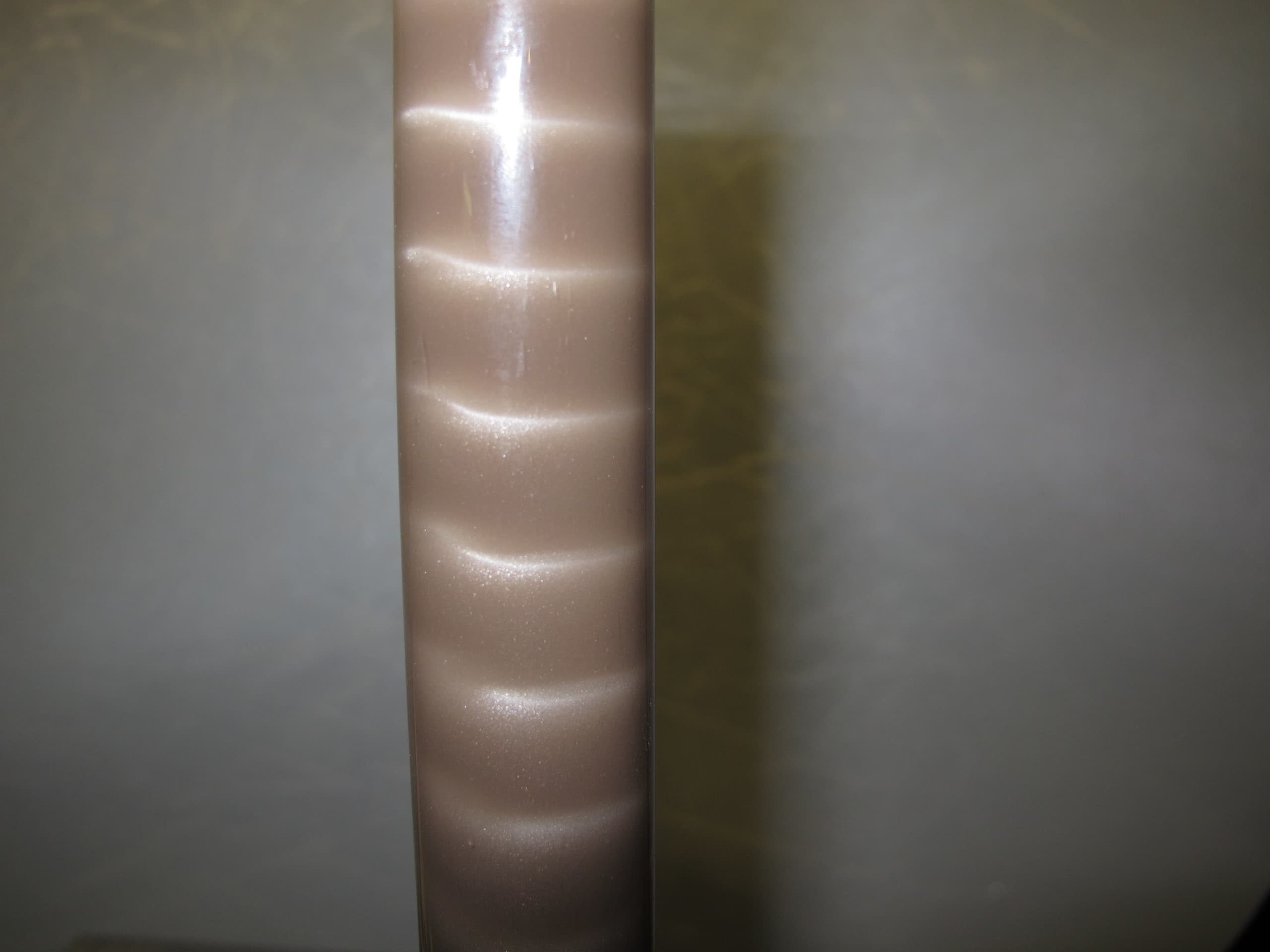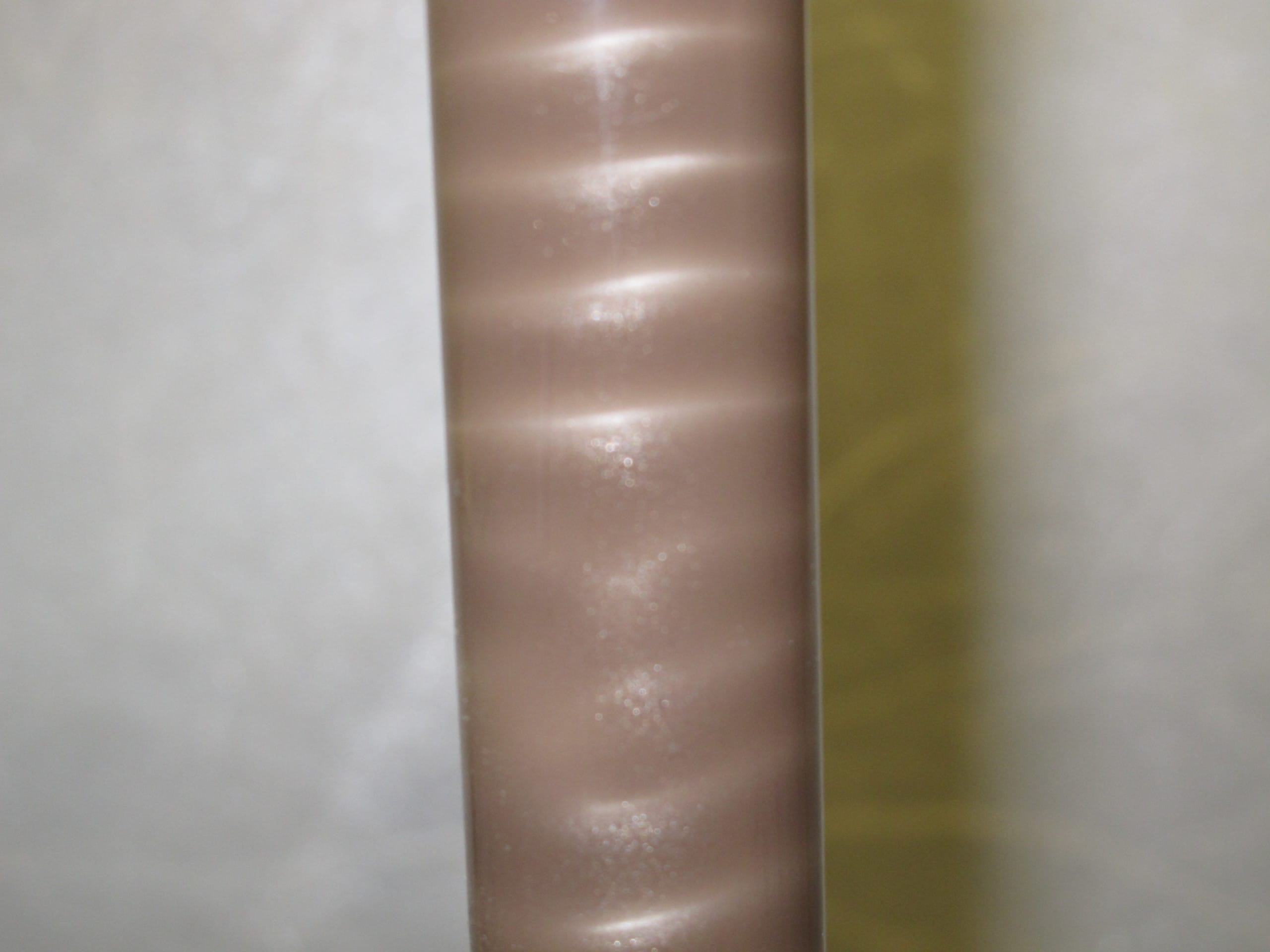Ultrasonic Energy Distribution is NOT Evenly Distributed
Customers considering the purchase of a new ultrasonic cleaning system must consider ultrasonic energy distribution which is provided by each operational frequency. Regardless of which ultrasonic frequency is selected, all ultrasonic cleaning systems produce a scrubbing action which is composed of a series of equidistant bands where the most powerful ultrasonic action is present. In between these bands known as standing waves, only a fraction of the ultrasonic energy is present. The lower the ultrasonic frequency, the greater the distance between neighboring standing waves. For example, at 25kHz, standing waves are approximately 1 inch apart from one another. At 80kHz, standing waves are less than 1/4 of an inch apart. The 80kHz operational frequency therefore produces a more evenly distributed scrubbing action, with better penetration into small detailed areas of the parts, such as blind holes, metal folds, and others. 25kHz ultrasonic systems would be better suited to cleaning large heavier objects with minimal amounts of detail.
The neighboring photos depict Zenith’s patented Ultraprobe Ultrasonic Demonstration Device which creates a patterns inside of a quartz tube which is filled with a proprietary liquid. The pattern indicates the standing waves and ultrasonic energy distribution produced by any ultrasonic cleaning system. The lighter stripes shown in the device indicate areas of high-intensity ultrasonic scrubbing action whereas the areas between these stripes are areas of significantly low ultrasonic scrubbing action. The top photo is of a 40kHz ultrasoinc cleaning system with full-sweep being tested, and the lower photo is of an 80kHz system being tested. As you can see, the 80kHz system produces a more evenly-distributed scrubbing action and would therefore clean items more evenly. However, you sacrifice scrubbing FORCE by gaining this even distribution.
Although the ultrasonic scrubbing action is reduced between neighboring standing waves, the ultrasonic energy distribution may be powerful enough to remove the contaminant in question, especially when cleaning agents can effectively reduce the contaminant-to-part bond strength to a level where existing ultrasonic energy can dislodge it. One cannot underestimate the importance of the cleaning agents in use in any ultrasonic cleaning system, since it is largely responsible for the success of the process. To illustrate the importance of using the proper cleaning fluids, consider that even 80kHz ultrasonic cleaning systems can remove the most bonded contaminants, such as rust or burned on carbons which are traditionally cleaned using lower operational frequencies when the appropriate cleaning agents are used.


Since the available ultrasonic energy is more evenly distributed in the cleaning tank at higher operational frequencies, scrubbing force at any one location in the tank is reduced at higher frequencies. Power is sacrificed for even cleaning action across the surface of the parts.
In an attempt to reduce the distance between neighboring standing waves, manufacturers of ultrasonic cleaning systems, including Zenith, have incorporated Sweep Frequency Circuits which continuously sweep the output frequency of the ultrasonic generator by 2 or 3 kHz on both sides of the natural resonance frequency of the transducer. The objective of this circuit is to cause wandering of standing waves during operation of the ultrasonic cleaner to eliminate all gaps between neighboring standing waves. Unfortunately, the reality is that these systems do very little to eliminate gaps between standing waves until frequencies of 80 kHz or higher are in use. A 2 or 3 kHz shift in frequency causes only microscopic movement of standing wave positions, and can not cause neighboring standing waves to contact one another. However, sweep frequency circuits can reduce the amount of damage which is created by ultrasonic cleaning system on parts being cleaned, a process called Cavitational Erosion.
Over the past few years, much has been made regarding the production of harmonic ultrasonic frequencies, and many manufacturers claim that their designs include the capability to produce these harmonics. Harmonic frequencies are frequencies which are multiples of the original resonance frequency of the transducers. Although these harmonics are created in every ultrasonic cleaning system, they do not produce any real improvement in the ultrasonic cleaning action produced. Simple aluminum foil tests can confirm that harmonics are not present, and do not improve the cleaning action of ultrasonic cleaner.
A tinfoil test is performed by positioning a sheet of aluminum foil in an ultrasonic tank, and activating the ultrasonic system for a short period of time between 30 seconds and one minute. The foil must be kept completely stationary during this test, just as parts being cleaned would be perfectly stationary. After 30 seconds to one minute, the foil is removed and evaluated visually. The foil will have been perforated at a high energy locations, such a standing wave locations, and will have been dented in areas of lower ultrasonic power, providing operators with the ability to determine the cleaning properties of any ultrasonic cleaning system. If harmonic frequencies were present to any useful degree, the pattern produced on the foil would be evenly distributed everywhere across it’s surface. Unfortunately, this is never the case. At 40kHz, holes will be perforated across the surface of the foil roughly every half-inch, with very little action found in between these holes.
Zenith’s Crossfire Multiple Frequency System was specifically designed to eliminate the guesswork in determining the proper ultrasonic frequency for a given application (US Patents 5,865,199 and 6,019,852). This system combines transducers and generators of two or more frequencies operating simultaneously in the same cleaning tank to provide the power of low-frequency ultrasonics with the penetration and even cleaning action provided by higher operational frequencies. These systems provide a cleaning action which cannot be duplicated using any single frequency ultrasonic system, any pulsed multi-frequency ultrasonic systems which utilize “universal transducers, or theoretical multiple frequency systems, those systems which utilize only 1 frequency but claim to produce multiple frequencies in the cleaning tank.

